beautiful orchard fruit, grown by the Western Washington Fruit Research Foundation at WSU-Mount Vernon
Hello everyone,
Day 2 of the Conference had so many good things going on.
Notes on the seminars and talks I was fortunate to attend on Day 2 follow:
Keynote Address – “Grow It! Mill It! Bake It!: Adding Value Adds Up” – Thor Oechsner
“Flatbreads from the Tandoor Oven” – Naomi Duguid and Dawn Woodward
“Beyond Bread: Ideas and Products for the Wood-Fired Micro Bakery” – Richard Miscovich
“Flavor & Identity: The Renaissance of Single-Varietal Wheat Flours” – Naomi Duguid, Dr. Stephen Jones,
Dawn Woodward
“Roller Mill Demonstration” – Dr. Stephen Jones
Day 2: Keynote Address – “Grow It! Mill It! Bake It!: Adding Value Adds Up” – Thor Oechsner
We laughed when Thor Oechsner showed slides illustrating how he got the `farming bug’ early in life :^) …
Biological vector: mature corn Non-biological vector: tractor
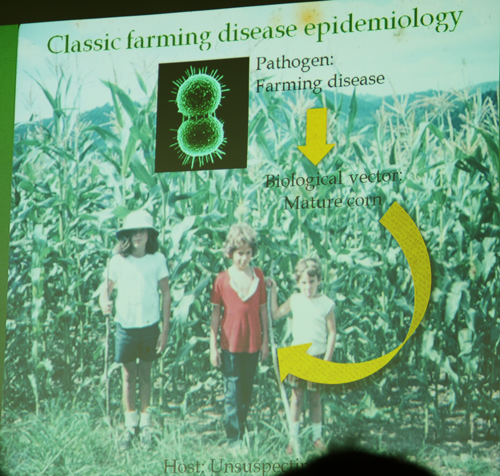
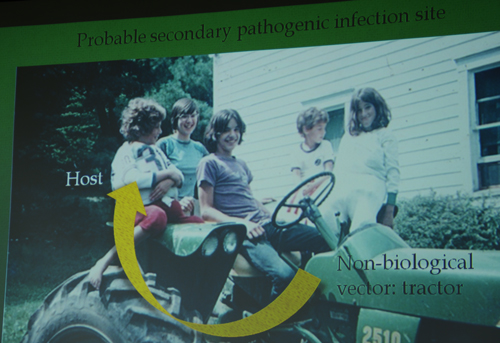
Thor talked about the journey he has taken to become a full-time farmer in upstate New York, and the business model he has developed, adding value to the grain he grows by milling it and baking it.
Farming on its own Thor thought a backwards business model: buying inputs at retail and selling at wholesale.
So he created a milling operation, Farmer Ground Flour,
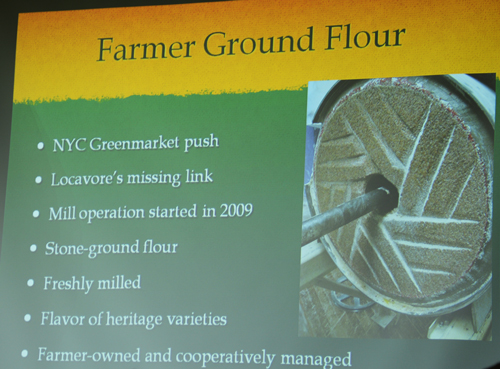
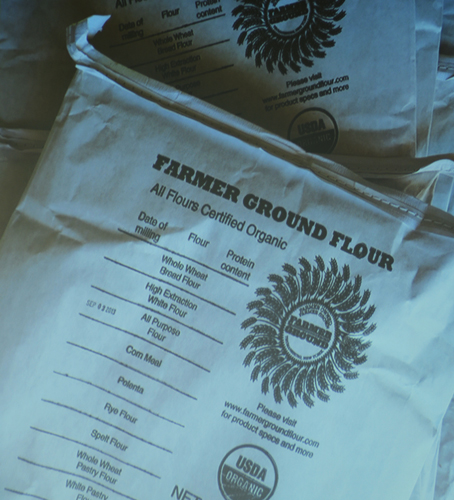
and Wide Awake Bakery, to provide a finished product that is truly local - a testament to New York wheat.
And what an incredible testament his loaves are!
(There was a collective gasp from the crowd when they saw these beauties!)
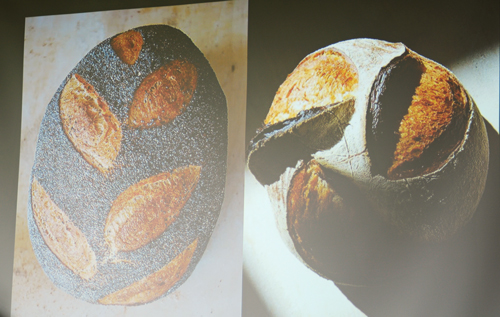
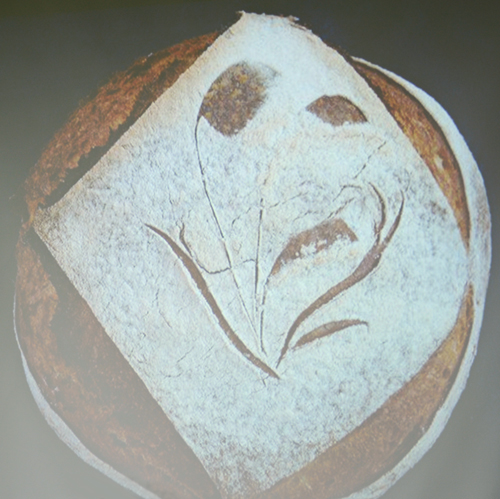
“Flatbreads from the Tandoor Oven” – Naomi Duguid and Dawn Woodward
Well, this was fun! and a great (and rare) opportunity to slap flatbread dough into a tandoor oven!
Naomi explained how naan was the name for bread in central Asia, where Tandoor cooking originated; and that Tandoor cooking was originally in clay-lined earth, the earth being the obvious place to hold heat.
We had the chance to try two different Tandoor ovens, a big fuel-fired one kindly brought to the Conference by WoodStone Corporation – and a second, smaller homemade version, heated with briquettes (it looked like it was made out of a metal can, lined with concrete then clay).
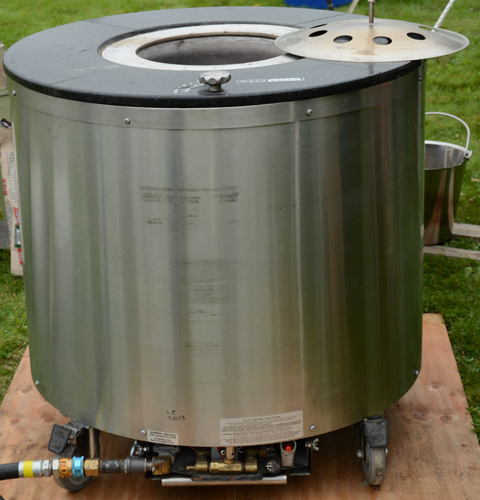
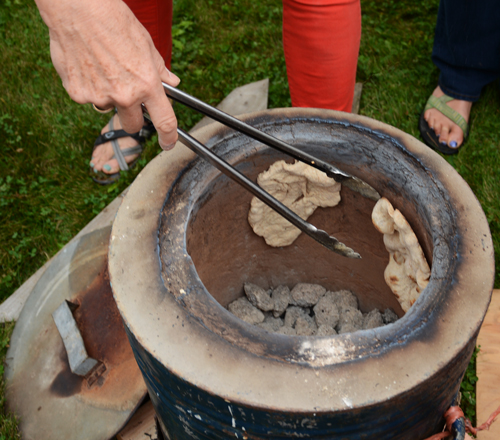
( here's Floyd at the oven :^) )
Naomi and Dawn had made two delicious flatbread doughs for us to work with: Snowshoe (Afghan) Naan, made with 75% Oregon Red Fife, levain and yogurt, and another, sweeter one called Nadzuki or Honey Flatbread, flavored with buckwheat and cardamom.
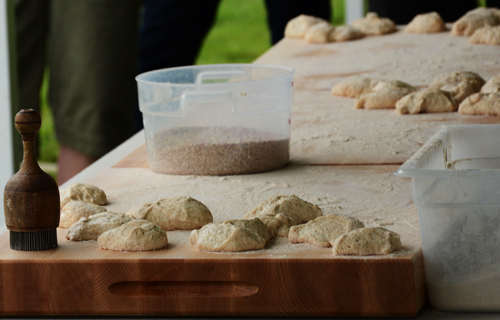
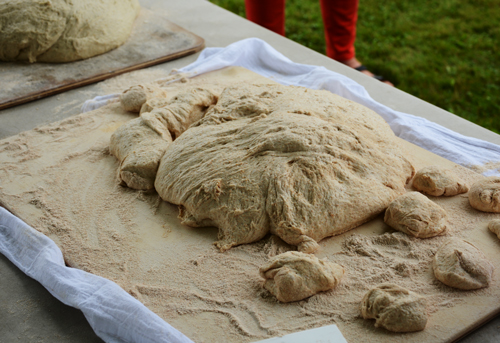
When shaping, Naomi told us to make sure the dough was thin, flat and even, and demonstrated how to do that by grasping the dough along its edges, letting it hang down, then moving around the edges of the dough, gravity gently stretch the dough into a thin round.
Dough round on the pillow, and full view of the pillow/naandle tool,
used to slap the dough into the big Tandoor oven
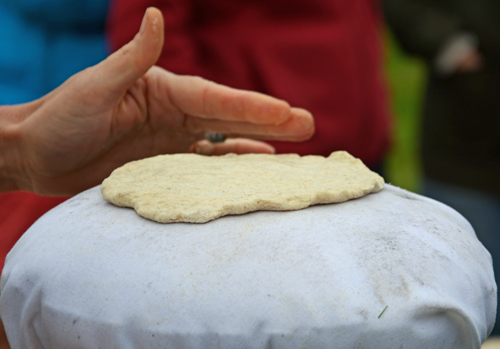

The dough was docked using beautiful, Turkish docking tools Naomi brought (the tool was floured first to prevent sticking). I wish I’d asked how to spell the name of this tool, but it was pronounced “checkitch”.
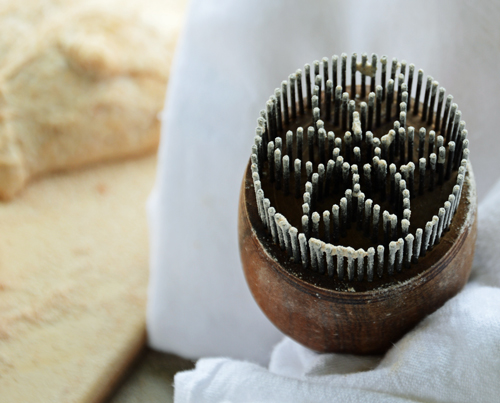
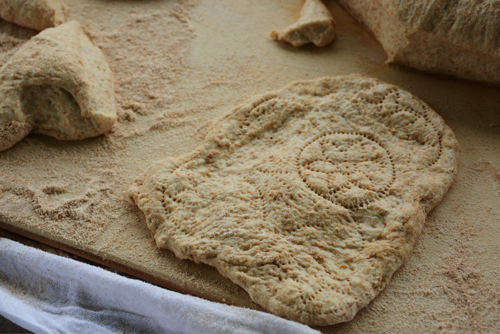
The wet side of the dough is slapped against the side of the oven (you slap towards you and never reach across the hot oven), where it sticks; as it cooks, moisture transfers into the clay and the bread starts to release when it is done. The naandle was used to place the dough in the big Tandoor oven, and oven mitts were used for the small one. When the bread looked ready, we used a pry bar to release the naan and a hook, or tongs, to remove it from the oven.
Mmmm, fresh, warm naan bread…! 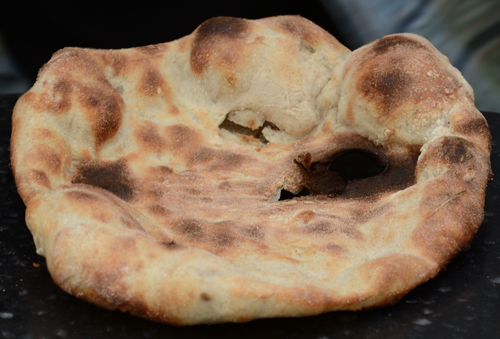
“Beyond Bread: Ideas and Products for the Wood-Fired Micro Bakery” – Richard Miscovich
It was wonderful to see Richard Miscovich and get a sneak preview of his new book, From the Wood-Fired Oven.
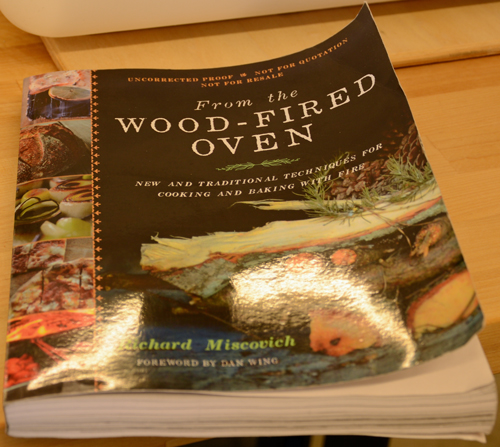
Richard was demonstrating techniques from his new book, cooking food using the whole range of oven temperatures in the WFO. Some really amazing, delicious food was coming out of that oven…
Dry-aged roast chicken (doesn’t that look fabulous?) 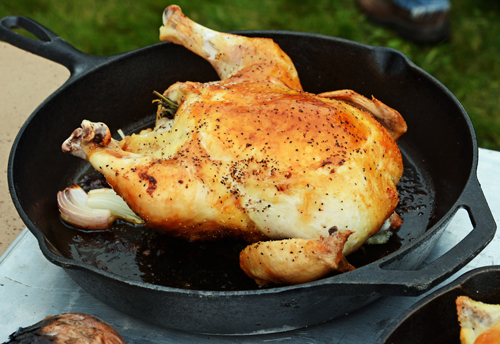
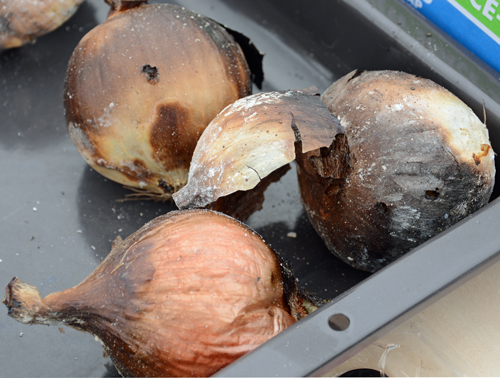 Coal-roasted onions
Coal-roasted onions
So tasty, this Rustic Potato Pie 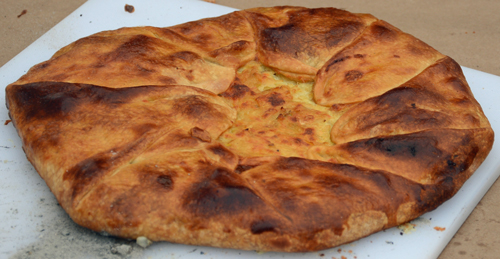
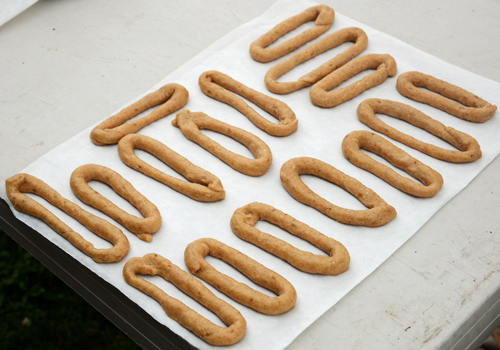 Taralli,Italian sweet rings flavored with anise, boiled before baking
Taralli,Italian sweet rings flavored with anise, boiled before baking
And this wonderful oven-roasted tomato sauce (we dipped naan bread in this – yum!)
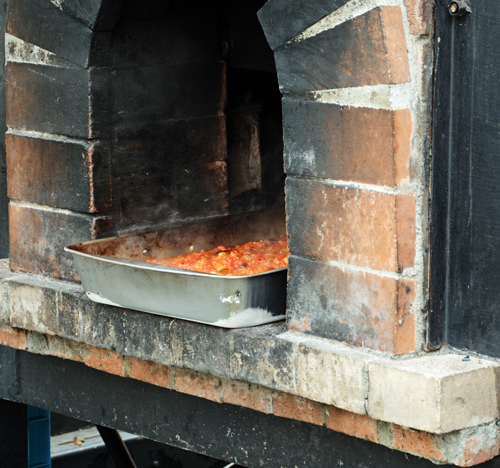
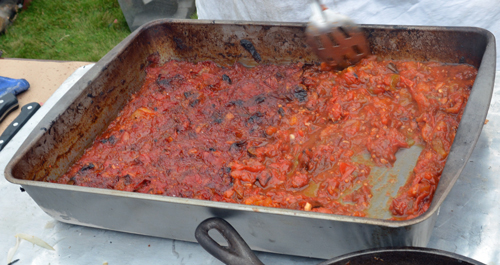
There were so many delicious ways to take advantage of all that heat!
“Flavor & Identity: The Renaissance of Single-Varietal Wheat Flours” – Naomi Duguid, Dr. Stephen Jones, Dawn Woodward
This seminar offered the chance for taste-testing breads and crackers made with single-varietal wheats, to distinguish flavor characteristics of each wheat, and to see if the flavor of the cracker translated into, or predicted, the flavor of the bread.
These were the breads – seven breads, seven whole wheats (Red Fife, Red Russian, Pactole, Tevelde, Edison, Renan, Soissons)
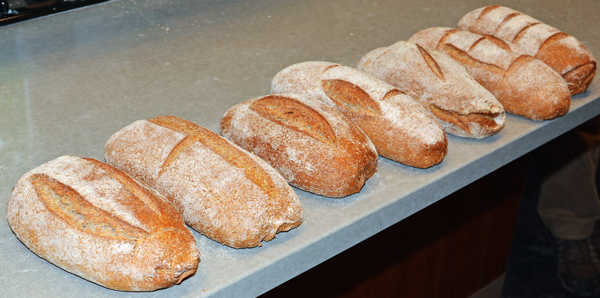
The breads were made with white sour, 2.2% salt and different hydrations for similar dough consistency.
It was interesting how different people picked out different flavors for each loaf. All of the grains (save one) were grown at WSU Mount Vernon (one came from Ontario), and all flour was milled fresh and used within one day of milling.
What struck me with these breads, is how each one had a grassy aroma, almost as if you could smell the field –
Dr. Jones said this happens with freshly-milled flour.
Flavors identified in these loaves by our group of tasters were a range: butteriness, caramel, sweet, pepper, spice, chocolate, bitter, earthy, milky – some loaves had more acidity than others. The bread I tasted made with the Renan wheat didn’t have an upfront acidity but acidity came through and lingered in the aftertaste - quite good.
The crackers to my taste had different flavors than the bread, for example, cereal flavors and lemon notes.
The cracker made from Soissons wheat had a ginger/spice flavor – quite extraordinary!
The next day, Dr. Jones talked about the wheat breeding work conducted at his research facility – the large number of wheat varieties they look at each year, breeding for flavor, explaining, or pulling out flavors in wheat by variety, location and year, for chefs and bakers.
It would be wonderful to buy single-varietal wheat, labelled to describe flavor notes and terroir – just like you might find for a bottle of wine. It was very interesting and exciting to take part in the taste test and hear more about the work Dr. Jones and his team are doing at WSU!
(more about this in Floyd’s post)
(Dr. Jones has written about wheat, flavor and identity in this article, Kicking the Commodity Habit, published in Gastronomica)
“Roller Mill Demonstration” – Dr. Stephen Jones
Have you ever wanted to see what the inside of a roller mill looks like? I have, and was grateful Dr. Jones opened up a roller mill to show us the inside, and the end result of milling.
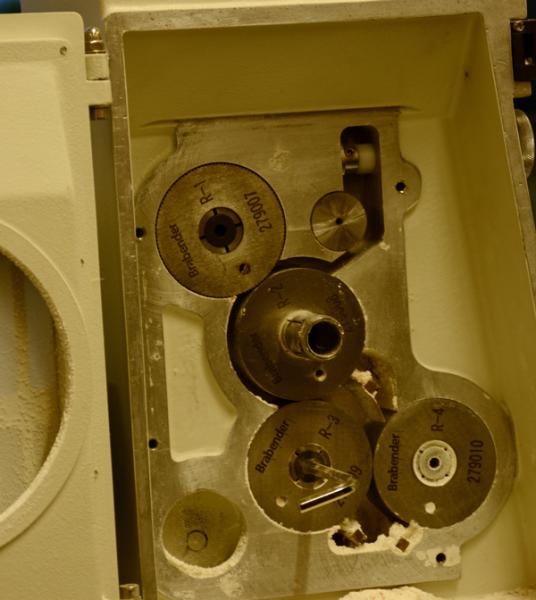
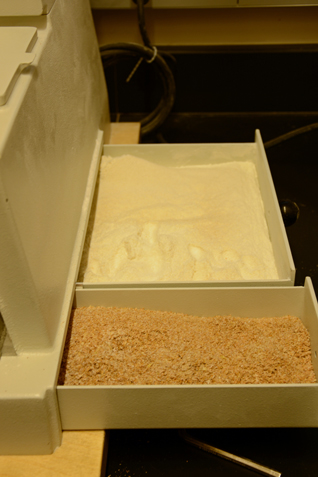
Next post: Day 3!
Previous post: Day 1!
2012 Kneading Conference West posts: Day 1, Day 2, Day 3